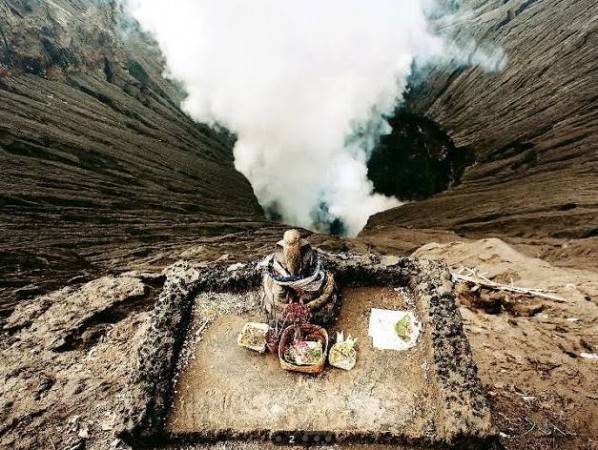
Nestled amidst the lush greenery of Indonesia, on the precipice of the Gunung Padang volcano in West Java, stands an enigmatic and ancient deity – Lord Ganesha. While Indonesia is predominantly a Muslim-majority nation, it boasts a rich tapestry of cultures and religions, including Hinduism, making it a fascinating land of contrasts. The presence of this centuries-old Lord Ganesha statue is a testament to the enduring legacy of Hinduism in the Indonesian archipelago.
Unearthing a Remarkable Discovery
The story of the 700-year-old Lord Ganesha statue begins with a volcanic eruption. In 1996, the Gunung Padang volcano erupted, sending shockwaves through the region. Amidst the aftermath, a remarkable discovery emerged. The eruption had exposed a hidden secret – an ancient and weathered statue of Lord Ganesha.
The Mystical Significance of Lord Ganesha
In Hinduism, Lord Ganesha is revered as the deity of intellect, wisdom, and the remover of obstacles. His elephant head and human body symbolize the harmonious coexistence of opposites, and he is often invoked at the start of important endeavors and rituals. Lord Ganesha is celebrated not only in India but also in various parts of Southeast Asia, including Indonesia, where Hinduism has deep historical roots.
The Cultural Landscape of Indonesia
Indonesia is renowned for its cultural diversity, with more than 17,000 islands and a multitude of ethnic groups. While Islam is the predominant religion, Hinduism has a long history in the region, dating back to the 4th century CE. The influence of Hinduism can still be seen in the architecture, art, and traditions of Indonesia, especially on the island of Bali.
The Ancient Connection
The presence of a 700-year-old Lord Ganesha statue on the slopes of a volcano is a testament to the enduring connection between Indonesia and Hinduism. The statue, despite being weathered by time and the elements, continues to symbolize the profound cultural and historical ties that bind the nation to this ancient religion.
The Importance of Preservation
Preserving this remarkable relic of the past is crucial. Efforts have been made to protect and conserve the statue, as it serves as a valuable historical and cultural artifact. The Indonesian government recognizes the significance of such findings in shedding light on the nation's rich and diverse heritage.
The Mystery of Its Origin
The origins of the Lord Ganesha statue remain shrouded in mystery. How did this ancient artifact find its way to the slopes of a volcano in Indonesia? Was it brought by traders, settlers, or pilgrims centuries ago? These questions continue to intrigue historians and archaeologists, sparking a quest to uncover the statue's origins.
A Symbol of Unity
In a world often marked by divisions, the Lord Ganesha statue in Indonesia serves as a symbol of unity. It exemplifies the coexistence of different cultures and religions, highlighting the shared human heritage that transcends geographical and religious boundaries.
The 700-year-old Lord Ganesha statue on the edge of the Gunung Padang volcano in Indonesia stands as a testament to the enduring legacy of Hinduism in the region. Its mystical presence on the slopes of a volcano, its mysterious origins, and its significance in Indonesia's cultural landscape all contribute to the captivating narrative of this ancient relic. As efforts to preserve and study this remarkable artifact continue, it serves as a reminder of the rich tapestry of human history and the connections that bind us across time and space.
Lord Ganesha's Reverence in Japan: A Tale of Cultural Symbiosis
The Divine Family of Lord Ganesha: His Wife and Children
Lal Bagh ke Raja: Celebrating Ganesh Chaturthi with Grandeur in Mumbai